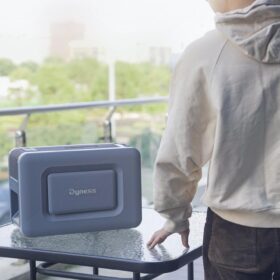New research claims PV outperforms afforestation in combating climate change
Scientists from Israel have calculated how long it would take for PV plants and afforestation projects to offset their warming impacts caused by the darkening of land. The results showed that in drylands, PV fields could be over 50 times more efficient than afforestation.
Dynamic allocations increase financial savings in energy communities
A global research group has compared static, customized dynamic, and dynamic-by-default energy allocations at a collective self-consumption project in France. They have found that dynamic customization performs better due to tax benefits.
Swiss startup develops adhesive film to create PV billboards
A Swiss company has developed adhesive film that can be applied on solar panels to make them more aesthetically appealing. The film reduces electricity production by between 10% and 30%, but income from advertising could offset such losses.
Physics-based model to predict soiling losses in bifacial solar modules
Scientists in India have developed a novel way to predict soiling accumulation on bifacial modules. Their approach considers dust deposition, rebound, and resuspension phenomena.
Dyness releases 1.6 kWh battery for balcony PV systems
Chinese manufacturer Dyness has unveiled a 1.6 kWh battery designed for balcony PV systems, allowing users to stack up to four units for a total storage capacity of 6.4 kWh, with a reported lifespan of more than 8,000 cycles.
Using air conditioning to cool down PV modules, dry dishes
An international research team has investigated how air conditioning may be used to reduce the operating temperature of PV panels. The researchers not only found that the proposed approach is technically viable, but they also tested the use of excess heat from the panels for drying dishes.
PV-driven microgrid for hydrogen, cooling
The University of French Polynesia has built a PV-driven hydrogen generation unit that combines a hydrogen chain with a thermochemical unit. The latter is used to recover waste heat from the electrolyzer and fuel cell to enable deferred cooling production for air conditioning.
New MPPT approach for multi-string PV systems under partial shading
Egyptian researchers have developed a multi-string PV system with a converter control strategy, achieving 99.81% efficiency with a direct duty cycle for maximum power point tracking (MPPT).
SAJ releases new battery inverter series for residential applications
China’s Guangzhou Sanjing Electric (SAJ) has developed two new single-phase and three-phase all-in-one battery inverters with efficiencies of 97.8% and 98.0%, respectively. They use artificial intelligence to support energy management.
Collectively owned PV systems improve energy community performance
Researchers have looked into the impact of potential regulated charge exemptions on two types of energy communities in 39 European countries. They have found that communities with collectively owned PV systems achieve greater savings.










